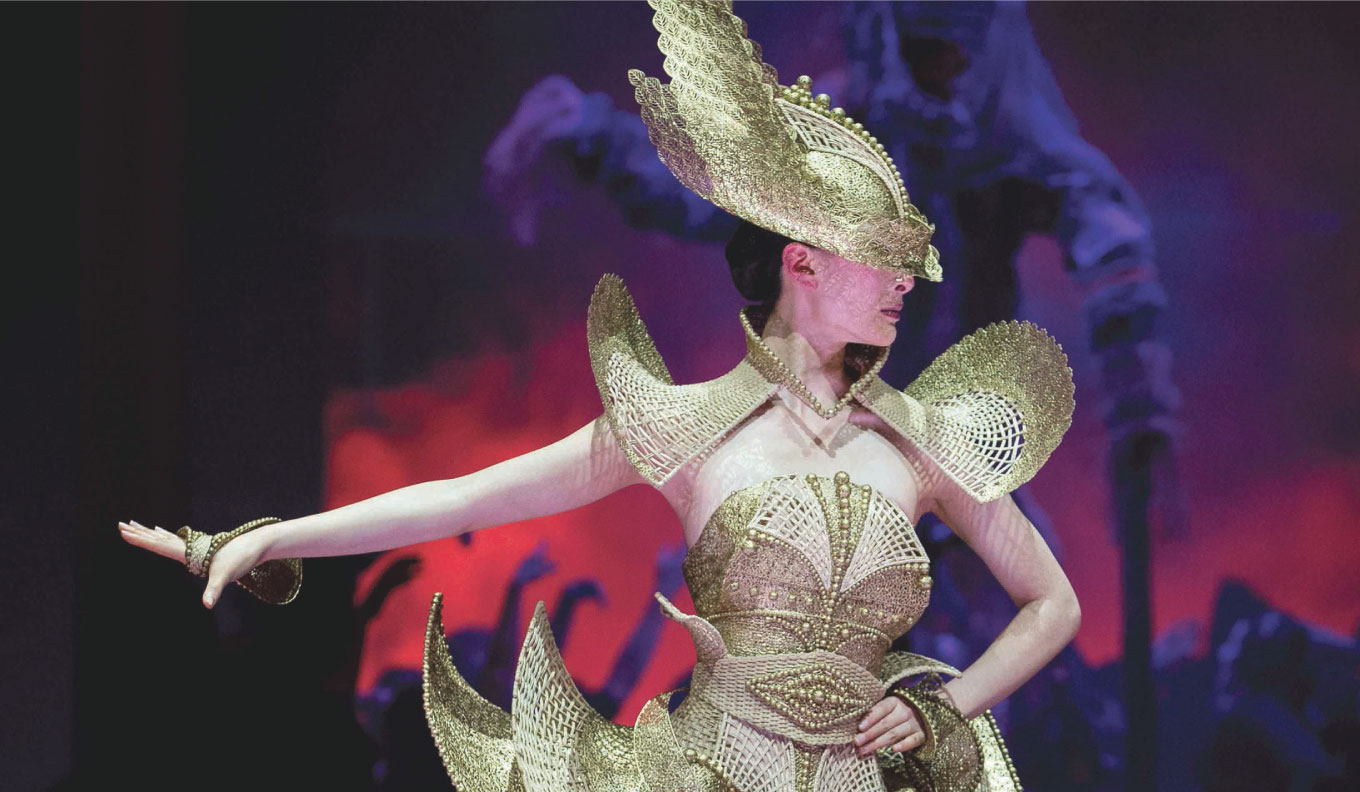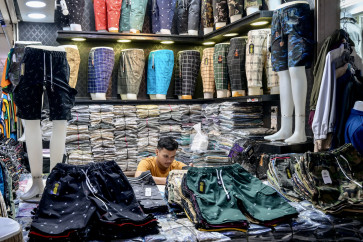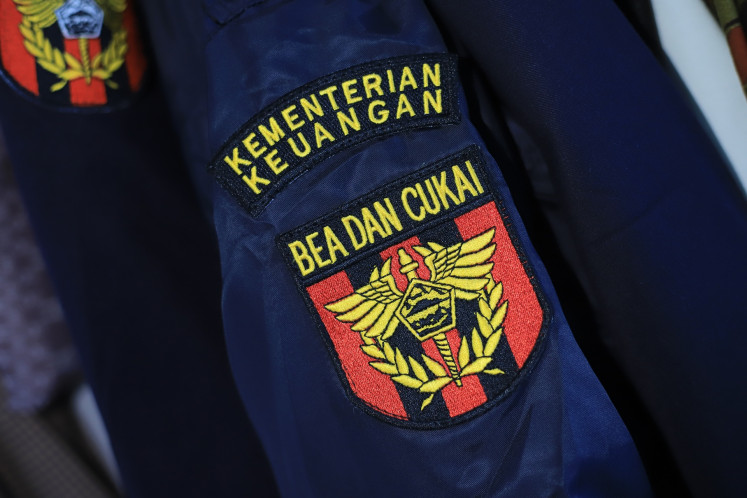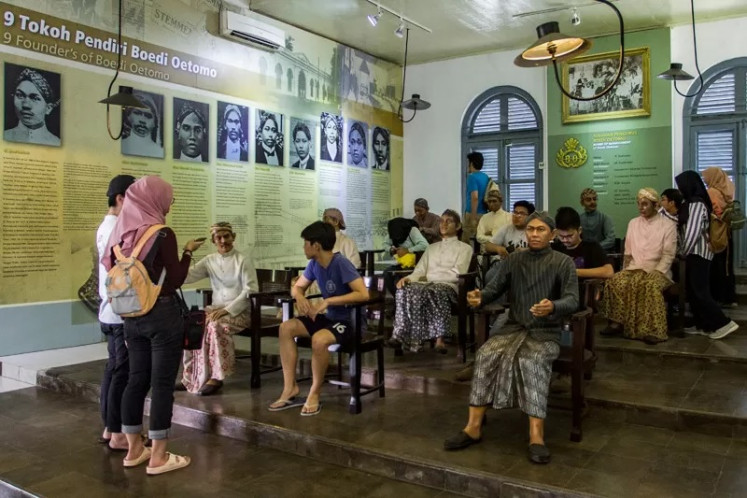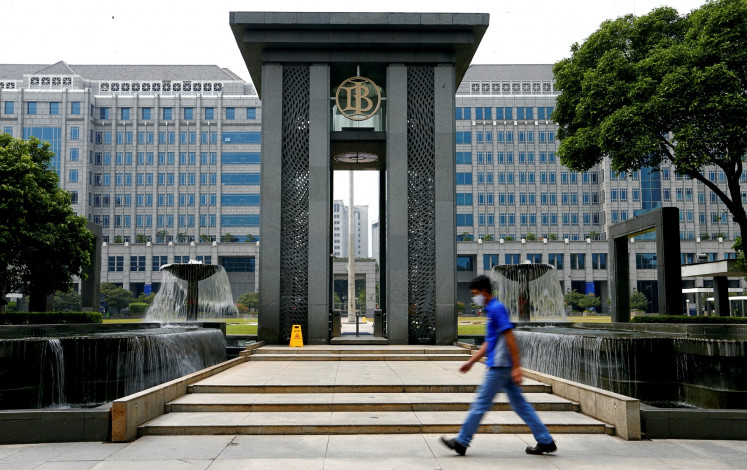Love crossing boundaries
Two artists coming from different ethnic backgrounds celebrate love the way they know best — through a display of their collaborative work
Change text size
Gift Premium Articles
to Anyone

T
wo artists coming from different ethnic backgrounds celebrate love the way they know best — through a display of their collaborative work.
The newly opened exhibition, “I & I”, is the second collaboration between Dutch visual artist Su Tomesen and her boyfriend, Yogyakartan screen printer and painter Teguh Hartanto.
In their work, digital photographs taken by Tomesen become the basis for mixed media on canvas by Teguh.
For the exhibition, which runs until March 9 at the Erasmus Huis, the artists translate their experiences in life and art — focusing on mixed-ethnic couples living in the country — into their work.
“We would like to portray so-called mixed race or multiethnic couples like ourselves in Indonesia, especially in Java,” Tomesen says.
“In Indonesia, there are strict rules about dating and marriage. It’s hard to do this outside your tribe, ethnicity or community. But of course it happens, out of love and with freedom in mind.”
Based in Amsterdam and Yogyakarta, Su’s work consists of videos, photographs and installations. She has been artist-in-residence in Belgrade, Amman and Johannesburg, and worked for an international video-art project in Port-au-Prince, Buenos Aires and Rio de Janeiro.
Her work evolves from curiosity and from observing social and political situations. Her background — educated as a historian and working as a television director — is integrated in her work.
By researching context and by talking to people, Tomesen says that she gets connected and informed about urgent topics.
“I love exploring places, immersing myself into a context, developing new work and contributing to the local art communities,” she says.
“Sometimes I feel like an ambassador. I show work from South Africa in Yerevan or a video I shot in Cuba in Yogyakarta.”
Teguh mainly works through the media of painting and screen printing while also creating street art with graffiti and stencils.
From 2001 until 2005, he studied at Yogyakarta’s Modern School of Design before taking part in various exhibitions, in Yogyakarta, Bandung and then with Su in Rotterdam.
The ongoing exhibition, which took the artists two months to prepare, is not their first. In the Netherlands, the two have worked on an art project together, allowing them to touch base with 140 nationalities — allowing them to feel and experience the whole world.
Su revealed that for her, these cultures together represented “global life” much more than the white center of Amsterdam where she lives, or the uniform Southeast Asian community in Yogyakarta of which Teguh is part.
“I often feel that race and skin color are tough phenomena because they seem to interfere in the interaction with other humans,” she says.
The mixing of people is a fascinating topic for Su, being fully Dutch, and also for Teguh, who is 100 percent Javanese.
“Multi-ethnicity is part of the concept of Indonesia. In my opinion, this should have consequences in practice. Without mixing, it is hard to make the concept work,” Teguh says.
Both in life and art, the couple is quite different: Teguh paints “from the feeling” in his house in a village near Yogyakarta while Su researches urban situations before deciding upon new work.
In her work, she mostly uses tools like cameras and “pushes buttons”, while Teguh uses the sun instead of a lamp for lighting the film in the screen printing process.
“We also find balance because we have things in common: We both work spontaneously and are visually oriented,” Tomesen says.
Each uses their specific skills in the project “I & I” — Tomesen finds the couples and portrays them and afterward Teguh does the screen printing and painting. They assist each other in the process — Teguh helps Su find people and make pictures while she assists him during the printing process. All steps in the working process are recorded on camera and presented at the exhibition alongside their 25 works.
“We’re of the opinion that couples with different cultural backgrounds are the future and a contribution to create pluralism.”
“I & I”
Runs until March 9
Erasmus Huis
Jl. HR Rasuna Said Kav. S-3
Kuningan, South Jakarta
erasmushuis.org


